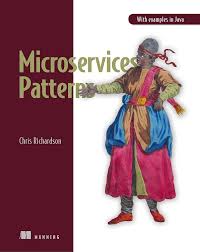Microservice Patterns: An Expanded White Paper
This white paper delves into the key patterns and practices for designing, developing, and deploying robust and maintainable microservice-based applications, drawing inspiration from Chris Richardson's "Microservices Patterns" book.
Key Patterns and Practices
- Service Decomposition Strategies
- Decomposition by Domain: Dividing the system into bounded contexts based on business capabilities.
- Decomposition by Subdomain: Breaking down large domains into smaller subdomains.
- Decomposition by Capability: Grouping functionalities that are closely related.
- Inter-Process Communication
- RESTful API: Using HTTP-based APIs for synchronous communication.
- Message Broker: Leveraging asynchronous messaging with brokers like RabbitMQ or Kafka.
- RPC Frameworks: Employing RPC frameworks like gRPC for efficient communication.
- Transaction Management
- Saga Pattern: Coordinating distributed transactions using a sequence of local transactions and compensating actions.
- Event Sourcing: Recording a sequence of events to reconstruct the current state of a system.
- CQRS (Command Query Responsibility Segregation): Separating read and write operations to optimize performance and scalability.
- Data Management
- Database per Service: Each service has its own database, promoting autonomy and scalability.
- Shared Database: Using a shared database for data consistency, but carefully managing access and updates.
- Event Sourcing: Storing a sequence of events to reconstruct the current state of a system.
- API Design
- RESTful API Design: Following REST principles for building scalable and maintainable APIs.
- API Gateway: Centralizing API management, security, and routing.
- Versioning Strategies: Handling API versioning to accommodate changes and backward compatibility.
- Service Discovery
- Service Registry: Centralizing service registration and discovery.
- Service Mesh: Managing network traffic, security, and observability between services.
- Deployment Strategies
- Containerization: Using containers like Docker to package services and their dependencies.
- Orchestration: Employing tools like Kubernetes to manage container deployment and scaling.
- Continuous Delivery: Automating the build, test, and deployment processes.
- Observability
- Logging: Centralized logging for troubleshooting and analysis.
- Metrics: Monitoring key performance indicators to identify bottlenecks and issues.
- Distributed Tracing: Tracking requests across multiple services to understand performance and errors.
Java-Specific Implementations
- Spring Boot: A popular framework for building microservices, providing features like auto-configuration, dependency injection, and actuator for monitoring.
- Spring Cloud: A suite of tools for building distributed systems, including service discovery, configuration management, and circuit breakers.
- Spring Data: Simplifies data access and persistence with various databases.
- Spring Integration: Provides a flexible integration framework for messaging and data flows.
- Spring Security: Offers security features like authentication, authorization, and encryption.
Example: E-commerce Microservices Architecture
- Product Service: Manages product catalog, pricing, and inventory.
- Order Service: Handles order processing, payment, and shipping.
- User Service: Manages user accounts, profiles, and preferences.
- Recommendation Service: Provides personalized product recommendations.
References
- Microservices Patterns: With examples in Java by Chris Richardson
- Building Microservices: Designing Fine-Grained Systems by Sam Newman
- Release It! Design and Deploy Production-Ready Software by Michael T. Nygard
- The Twelve-Factor App: A Methodology for Building Software-as-a-Service Apps by Adam Wiggins
Conclusion
Microservices architecture offers a powerful approach to building scalable and resilient systems. By understanding and applying these patterns and practices, developers can effectively design, develop, and deploy microservices-based applications that meet the demands of modern software development.



